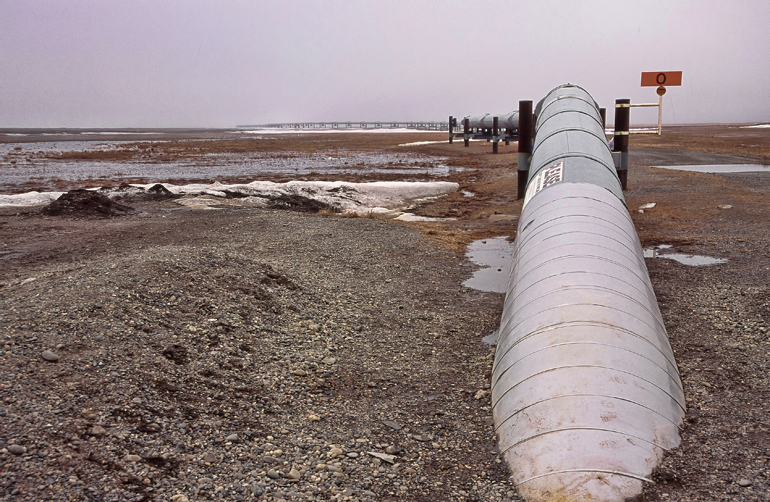
For a month the angels of Arctic summer have been smiling on Prudhoe Bay, in Alaska. Day blends with lazy night so that it never gets truly dark here, just thick twilight. At four A.M. everyone's favorite orb rises in the sky like a giant yellow daisy. The thermometer will tally 50 degrees this June day. On the distant tundra a herd of caribou plucks lichen and fidgets, in a vain attempt to discourage the flocks of pesky mosquitos. The nearby coast is clear of ice, but offshore a gallery of sculpted bergs awaits the sweet warmth, to melt and shape, and melt and shape, until there is no more summer ice.
In 1968 Atlantic Richfield announced the discovery of a giant oil field beneath Alaska's distant North Slope tundra and Arctic Ocean. A heated "development verses wilderness" debate immediately ensued, won handily by the bulldozers. Within two years of that fateful proclamation a thousand planes per day from Fairbanks and Anchorage were penetrating the former silence. "Overnight" the boom town of Prudhoe Bay was born, 12 million dollars of construction at the edge of earth, a modern day Klondike, minus the bordelos. This would be followed in short order by the largest pipeline project in history.
I love this picture. It says so much about the world today. The Alaska pipeline surges out of the ground at Prudhoe Bay, surely one of the world's most forlorn spots, on the cusps of the Arctic Ocean, miles from nowhere. It recedes into the distance on its controversial thousand mile journey across Alaska.
On March 23, 1989 the Exxon Valdez left Valdez, AK from the Alyeska Pipline Terminal at 9:12 PM. The 987 foot ship, second newest of Exxon's 20 tanker fleet, was chock full of North Slope crude and bound for Long Beach. She never made it. The journey was cut short when three hours later the ship collided with Bligh Reef in Prince William Sound and spilled nearly 11 million gallons of the crude. At the time it was the 54th largest spill in history. At least two points are notable here: that 11 million gallons of oil poisoned one of the more pristine areas in the world and that 53 previous spills were bigger.